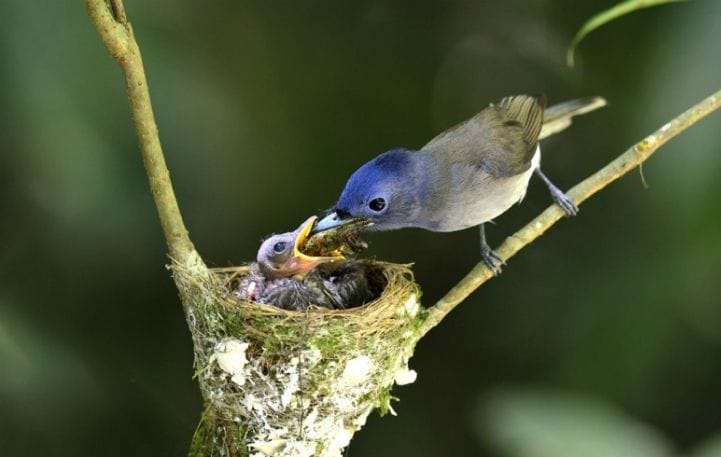Have you ever thought how much of what you’ve been told when you were a child really true? Some things are repeated so frequently that they are taken as unquestionable facts by everyone sooner or later. But, as it turns out, this is not the case.
Let’s see, what is the world’s highest mountain? This isn’t fully accurate if you called Everest or Kilimanjaro. Mount Everest is the tallest when measured from base to peak, but Mauna Kea in Hawaii is the tallest when measured from top to bottom, including what is below sea level.
Amazed? Then take a look at eight more commonly held beliefs that turned out to be false.
1. Birds drop their chicks if you touch them

You must have believed as a kid that parent birds would forsake their chicks if they smelled a person on them. Birds have a weak sense of smell, so if you see a chick on the ground, it’s most likely because he fell out of the nest and is learning to fly, and his mother is keeping a careful eye on him.
2. Lightning doesn’t strike twice in the same place
Another typical misunderstanding. According to NASA, the chances of lightning striking the same spot twice are 45 percent, not zero. Because lightning seeks the quickest path to the ground, tall structures and trees have the greatest risk of getting struck.
3. Human have only five senses
In reality, there are a slew of others. Until now, the actual figure (about 20) has remained unknown, but you must factor in hunger and thirst, as well as vision, hearing, smell, taste, and touch.
Nociception (the capacity to feel pain), proprioception (the capacity to feel where your body parts are, which allows us to place our hands together without seeing them), temperature, and a sense of balance should all be added to this list.
4. Alcohol kills brain cells
Don’t get too thrilled just yet. While this is a common misperception, excessive alcohol use can nonetheless harm the brain.
Dendrites, the small branching processes of a neuron that transmit nerve impulses to the cell’s body, are damaged by alcohol. It’s also curable.
5. Bats can’t see

We all remember learning in biology class that bats utilize echolocation to navigate through space. Bats can see and larger species rely on eyesight rather than echolocation for navigation. Don’t forget about night vision, too.
6. Goldfish have short term memory

Many said that Goldfish can have only five seconds memory. The poor fish have been subjected to this caricature for far too long, and it’s past time to put a stop to it. Aquarium fish have a memory that can last up to five months.
Of course, this does not imply that they are geniuses, but certain fish have intelligence comparable to that of birds and other animals.
7. Chewing gum takes seven years to digest
This is something you should have heard in kindergarten or school. The “fact” that if you ingest a watermelon seed, a watermelon will develop in your stomach is also included.
The most intriguing aspect is that many individuals grew up believing that if chewing gum is ingested, it will stick someplace in the stomach walls for up to seven years. Don’t be alarmed; these are all horror stories for kids. Gum takes the same amount of time to digest as other foods.
8. Chameleons change color according to surrounding

Chameleons do not need any color changes because their natural color is already suitable for camouflage. This is, in fact, how they respond to physical, emotional, and mental changes. They may also change color to communicate or in response to light or temperature.

About the Author
Ankita is a German scholar and loves to write. Users can follow Ankita on Instagram ![]()
Why Indian Movies Always Have Songs ?
The reason for songs in Indian films is that most of the films have love…
My short but memorable stay at Gangaur Ghat in Old Udaipur
Gangaur Ghat is on the banks of Lake Pichola in the old city of Udaipur…
Amazing story of Samuel Jackson no less than a movie
The first African-American actor that comes to mind in our minds is Samuel Leroy Jackson….
Why did Sam Asghari and Britney Spears broken up?
Sam Asghari and Britney Spears’ breakup happened just a few days ago but it gives…
How Iran looked like before Iranian Revolution 1979, [Pics]
Whenever Westerners hear the term “Iran,” images of veiled women, burning American flags, and enraged…
Chandigarh ban on Barking of Dogs !
You have read it right that dog barking is banned by law in Chandigarh. It…






